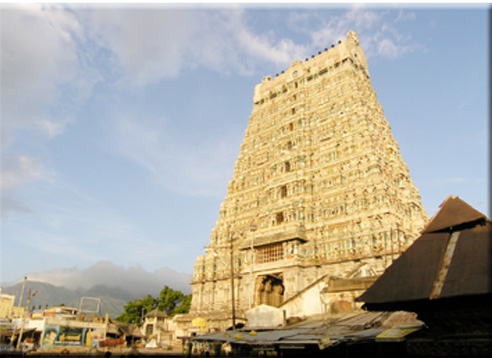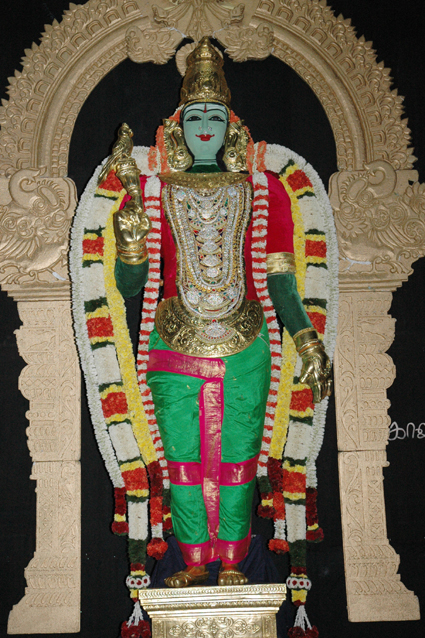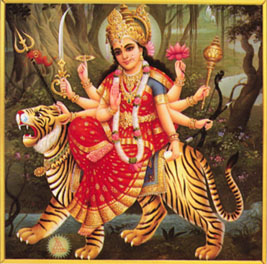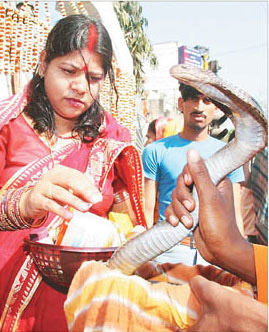AN APPEAL FOR SUPPORT
- We seek your support to meet expenses relating to some new and essential software, formatting of articles and books, maintaining and running the journal through hosting, correrspondences, etc. You can use the PAYPAL link given above. Please click on the PAYPAL logo, and it will take you to the PAYPAL website. Please use the e-mail address thirumalai@mn.rr.com to make your contributions using PAYPAL.
Also please use the AMAZON link to buy your books. Even the smallest contribution will go a long way in supporting this journal. Thank you. Thirumalai, Editor.
BOOKS FOR YOU TO READ AND DOWNLOAD FREE!
- A STUDY OF THE SKILLS OF READING
COMPREHENSION IN ENGLISH DEVELOPED BY STUDENTS OF STANDARD IX IN THE SCHOOLS IN TUTICORIN DISTRICT, TAMILNADU ...
A. Joycilin Shermila, Ph.D. - A Socio-Pragmatic Comparative Study of Ostensible Invitations in English and Farsi ...
Mohammad Ali Salmani-Nodoushan, Ph.D. - ADVANCED WRITING - A COURSE TEXTBOOK ...
Parviz Birjandi, Ph.D.
Seyyed Mohammad Alavi, Ph.D.
Mohammad Ali Salmani-Nodoushan, Ph.D. - TEXT FAMILIARITY, READING TASKS, AND ESP TEST PERFORMANCE: A STUDY ON IRANIAN LEP AND NON-LEP UNIVERSITY STUDENTS - A DOCTORAL DISSERTATION ...
Mohammad Ali Salmani-Nodoushan, Ph.D. - A STUDY ON THE LEARNING PROCESS OF ENGLISH
BY HIGHER SECONDARY STUDENTS
WITH SPECIAL REFERENCE TO DHARMAPURI DISTRICT IN TAMILNADU ...
K. Chidambaram, Ph.D. - SPEAKING STRATEGIES TO OVERCOME COMMUNICATION
DIFFICULTIES IN THE TARGET LANGUAGE SITUATION - BANGLADESHIS IN NEW ZEALAND ...
Harunur Rashid Khan - THE PROBLEMS IN LEARNING MODAL AUXILIARY VERBS IN ENGLISH AT HIGH SCHOOL LEVEL ...
Chandra Bose, Ph.D. Candidate - THE ROLE OF VISION IN LANGUAGE LEARNING
- in Children with Moderate to Severe Disabilities ...
Martha Low, Ph.D. - SANSKRIT TO ENGLISH TRANSLATOR ...
S. Aparna, M.Sc. - A LINGUISTIC STUDY OF ENGLISH LANGUAGE CURRICULUM AT THE SECONDARY LEVEL IN BANGLADESH - A COMMUNICATIVE APPROACH TO CURRICULUM DEVELOPMENT by
Kamrul Hasan, Ph.D. - COMMUNICATION VIA EYE AND FACE in Indian Contexts by
M. S. Thirumalai, Ph.D. - COMMUNICATION
VIA GESTURE: A STUDY OF INDIAN CONTEXTS by M. S. Thirumalai, Ph.D. - CIEFL Occasional
Papers in Linguistics,
Vol. 1 - Language, Thought
and Disorder - Some Classic Positions by
M. S. Thirumalai, Ph.D. - English in India:
Loyalty and Attitudes
by Annika Hohenthal - Language In Science
by M. S. Thirumalai, Ph.D. - Vocabulary Education
by B. Mallikarjun, Ph.D. - A CONTRASTIVE ANALYSIS OF HINDI
AND MALAYALAM
by V. Geethakumary, Ph.D. - LANGUAGE OF ADVERTISEMENTS
IN TAMIL
by Sandhya Nayak, Ph.D. - An Introduction to TESOL:
Methods of Teaching English
to Speakers of Other Languages
by M. S. Thirumalai, Ph.D. - Transformation of
Natural Language
into Indexing Language:
Kannada - A Case Study
by B. A. Sharada, Ph.D. - How to Learn
Another Language?
by M.S.Thirumalai, Ph.D. - Verbal Communication
with CP Children
by Shyamala Chengappa, Ph.D.
and M.S.Thirumalai, Ph.D. - Bringing Order
to Linguistic Diversity
- Language Planning in
the British Raj by
Ranjit Singh Rangila,
M. S. Thirumalai,
and B. Mallikarjun
REFERENCE MATERIAL
- UNIVERSAL DECLARATION OF LINGUISTIC RIGHTS
- Lord Macaulay and
His Minute on
Indian Education - In Defense of
Indian Vernaculars
Against
Lord Macaulay's Minute
By A Contemporary of
Lord Macaulay - Languages of India,
Census of India 1991 - The Constitution of India:
Provisions Relating to
Languages - The Official
Languages Act, 1963
(As Amended 1967) - Mother Tongues of India,
According to
1961 Census of India
BACK ISSUES
- FROM MARCH 2001
- FROM JANUARY 2002
- INDEX OF ARTICLES
FROM MARCH, 2001
- MAY 2006 - INDEX OF AUTHORS
AND THEIR ARTICLES
FROM MARCH, 2001
- MAY 2006
- E-mail your articles and book-length reports (preferably in Microsoft Word) to thirumalai@mn.rr.com.
- Contributors from South Asia may send their articles to
B. Mallikarjun,
Central Institute of Indian Languages,
Manasagangotri,
Mysore 570006, India or e-mail to mallikarjun@ciil.stpmy.soft.net - Your articles and booklength reports should be written following the MLA, LSA, or IJDL Stylesheet.
- The Editorial Board has the right to accept, reject, or suggest modifications to the articles submitted for publication, and to make suitable stylistic adjustments. High quality, academic integrity, ethics and morals are expected from the authors and discussants.
Copyright © 2004
M. S. Thirumalai
WORSHIP AND LANGUAGE USE IN TAMIL
M. S. Thirumalai, Ph.D.

1. THREE TYPES OF LANGUAGE USE IN WORSHIP
In this paper, I investigate the language use employed in Hindu worship in Tamil and among Tamil speakers. One notices three kinds of language in worship - use of Sanskrit, use of Tamil verses, and impromptu utterances of devotees in Tamil. These three kinds of language use can be ascribed, in some overlapping manner, to the two types of temples found in Tamilnadu-temples which may be labeled, for want of a better appellation, as elitist temples and folk temples. While the impromptu utterances of the devotees in Tamil are heard both in elitist and folk temples, the use of Tamil verses and Sanskrit are restricted to elitist temples.
2. FOLK TEMPLES AND ELITIST TEMPLES

Again, while the use of Sanskrit archana itself is a defining characteristic of an elitist temple, there are also other characteristics that distinguish an elitist temple from a folk temple and vice versa. In folk temples, which include both hypaethral (wholly or partly open to the sky) as well as roofed temples, the deities, which are variously called ciruteyvankal 'smaller deities,' or kiraama teevataikal 'village deities' are worshipped.
- In elitist temples, generally speaking, the gods and goddesses referred to in Hindu puranas are worshipped.
- The deities of folk temples, unlike those of the other category, do not find a place in codified Hindu pantheon and mythology, but occupy prominent positions in folk traditions, which could differ from region to region within Tamilnadu, and from caste or other social groups
- Folk temples are small and do not have much architectural complexity.
- While elitist temples may follow certain agama or other codified religious prescriptions in terms of temple architecture as well as the placement, number, and kinds of deities, folk temples are covered by folk traditions only.
- There need be no image even, in folk temples-trees, sticks, pillars, pictures, walls, etc., could be construed as deities and worshipped. In elitist temples, there are always images/idols whether in human form or anthropomorphic form for worship. There could be exceptions here and there.
- Folk temples and the deities therein may be family-based, in the sense that some families may own the temple, and that exclusively these families may have worshiped the deities for generations. Others may not worship in such temples, whether or not explicit restrictions have been posted or otherwise made known.
- Elitist temples are all open temples with no lawful restrictions on Hindus worshipping there except those relating to entry into sanctum sanctorum and other reserved areas, entry into which has been allowed by dicta of various sorts only to specified professional groups such as priests relating to the immediate conduct of pujas. At least one major elitist temple (Natajaja temple in Chidambaram) is under the trusteeship of priestly class.
- A few families whose members are related may also adopt a folk temple and its deities.
- Folk temples may also be caste-based, and if there are sects within a caste, these temples may be sect-based also.
- There are also folk temples and deities, which may be multi-caste based.
- There are folk temples devoted exclusively to male or female deities, in addition to folk temples devoted to both female and male deities. In contrast, in elitist temples both male and female deities are generally accommodated.
- While deities of elitist temples are invariably given only vegetarian offerings, deities of the folk category may be given either vegetarian or non-vegetarian offerings or both, with the number of those deities offered the non-vegetarian dominating. The vegetarian/non-vegetarian offering is based not only on the perception of the deities as vegetarian or non-vegetarian as eaters/in terms of diet or dietary preference by the devotees, but also on the basis of vegetarian or non-vegetarian character of the caste/family of the devotee and the days of the week during which rituals are performed, etc.
- There may be a chain of folk temples of a deity with some specific variation making the deity as belonging to a particular caste/sect/family, wherever the members of that caste/sect/family are living in regardless of where members of said caste/sect/family currently reside in the vicinity of these temples. This chain provides a clue to draw the lineage of the groups and the migratory patterns of the groups involved.
- Both in folk temples (with more than one deity) and elitist temples, one could make a distinction between a deity which is a main or presiding deity occupying the central position in worship procedures and a deity which is one among many in the same temple.
- There are certain consequences of such a distinction noticed in the linguistic behaviour of the devotee. The devotee spends more time and utters more utterances while worshipping the main deity. There is only a perfunctory linguistic utterance in favour of the latter.
- Both in folk temples (with more than one deity) and elitist temples, one could make a distinction between a deity, which a devotee worships with great attention and a deity, which he/she worships in a perfunctory and routine manner. There are certain consequences of such a distinction noticed in the linguistic behaviour of the devotee, in the sense that the quantity and quality of linguistic utterances for the former category far exceed those for the latter category.
- One could also make a distinction between benevolent and malevolent deities. There are certain consequences of such a distinction noticed in the linguistic behaviour of the devotee. A benevolent deity or a deity of indifferent value or a deity, who is perceived to be neutral or indifferent to humans, could be bypassed, whereas a malevolent deity must be worshipped and appeased with conventionally prescribed linguistic behaviour.
- While the folk temples may not have elaborate daily pujas, the deities of the elitist temples are worshipped with a number of frequent pujas on a fixed schedule.
- Because they generally center around a family, caste, or subject, folk temples may be seen as a variable defining a group, whereas elitist temples which receive varied groups may be seen as having the function of uniting different groups into a composite whole while retaining the diverse elements.
- The elitist temples may be seen as having a standardizing influence and function, with attendant prestige. While folk temples may be seen as dialects of a language--some with prestige and some without, yet all having their own functions -- the elitist temples must be seen as the venue of the standard dialect of language and functioning as the common medium with prestige and overriding decision-making roles in terms of choice and use of various elements; a standard that requires to be consciously cultivated and mastered.
- Just as the distinction between a non-standard dialect and standard dialect is a dynamic one in the sense that both dialects could have mutual influence and in rare cases could exchange their roles, and just as the social distinctions which are dynamic and ever changing and which have gray areas, the distinction of folk vs. elitist temple is also a dynamic one. There are mutual influences as a folk temple could be "elevated" to the level of an elitist temple through various processes. (For linguistic processes, which are diagnostic indices of this elevation phenomenon, see below.)
- However, movement in the reverse direction is not easily attestable. For this phenomenon, a parallel is to be found not in the dynamism that we notice among the spoken and written dialects of the language; once a written language always a written language, even when it has an aural form.
- Another parallel is to be sought in the possible elevation of so-called lower castes to a higher level, but an impossibility of de-elevating the already established higher castes and bringing them to a lower social level. For instance, even if one were to order the entire Tamil Brahmin castes or the vegetarian Vellala caste to be politically and economically lower in stature, they would still be considered upper castes at the social level in the Hindu caste system of Tamils.


PLEASE CLICK HERE TO READ THE ENTIRE ARTICLE IN A PRINTER-FRIENDLY VERSION.
M. S. Thirumalai
Advertising Language: The Psychology Behind Advertising Languages | The Sacred Invented | Worship and Language Use in Tamil | Practicing Literary Translation: Symposium Round 8 | The Fall of the House of Usher | Socio-economic Background, etc. of the Students Who Prefer to Pursue Post-Graduate Studies in a Language in Punjab | A Peek into Some of the Linguistic Ideas of Early Gandhi | Diversities in the Speech and Language Skills Among Children With Developmental Gerstmann's Syndrome - a Subgroup of Learning Disability | A Review of Sila Basak's Book Bengali Culture and Society Through Riddles | HOME PAGE | CONTACT EDITOR
M. S. Thirumalai, Ph.D.
Bethany College of Missions
6820 Auto Club Road, Suite C
Bloomington, MN 55438
USA
thirumalai@mn.rr.com
- Send your articles
as an attachment
to your e-mail to
thirumalai@mn.rr.com. - Please ensure that your name, academic degrees, institutional affiliation and institutional address, and your e-mail address are all given in the first page of your article. Also include a declaration that your article or work submitted for publication in LANGUAGE IN INDIA is an original work by you and that you have duly acknolwedged the work or works of others you either cited or used in writing your articles, etc. Remember that by maintaining academic integrity we not only do the right thing but also help the growth, development and recognition of Indian scholarship.

